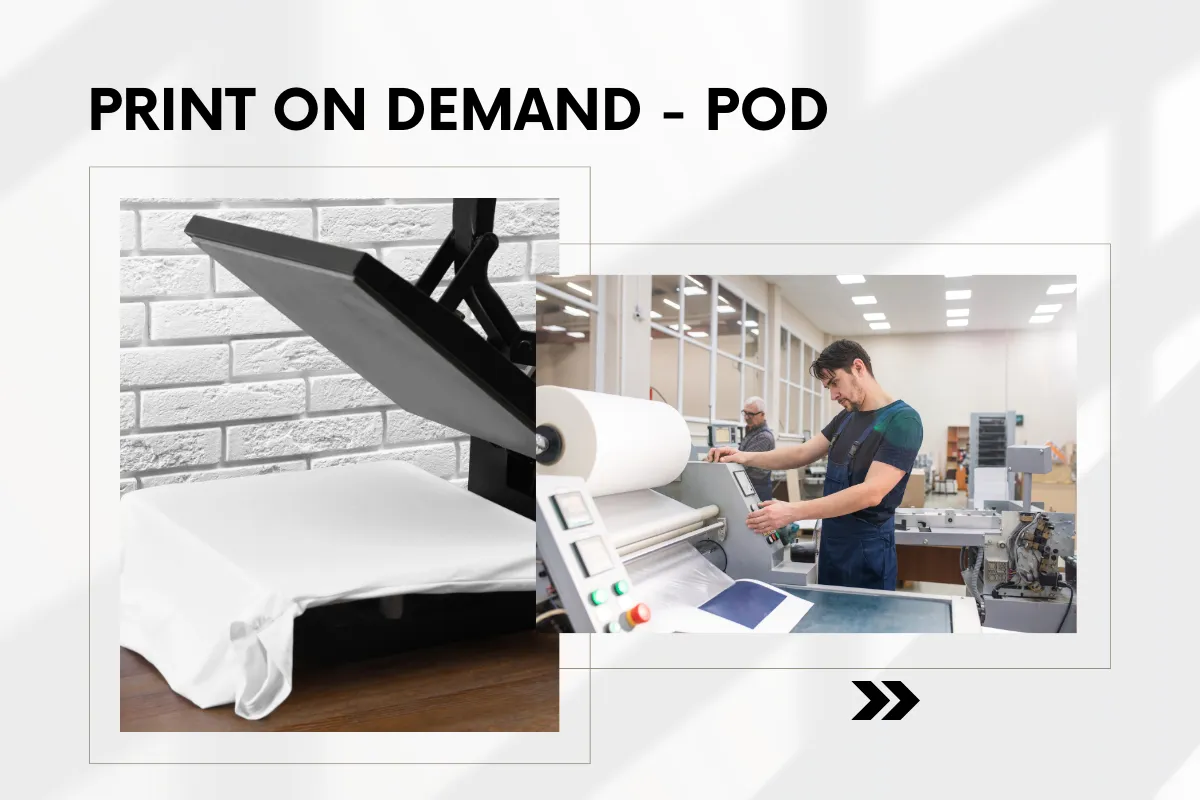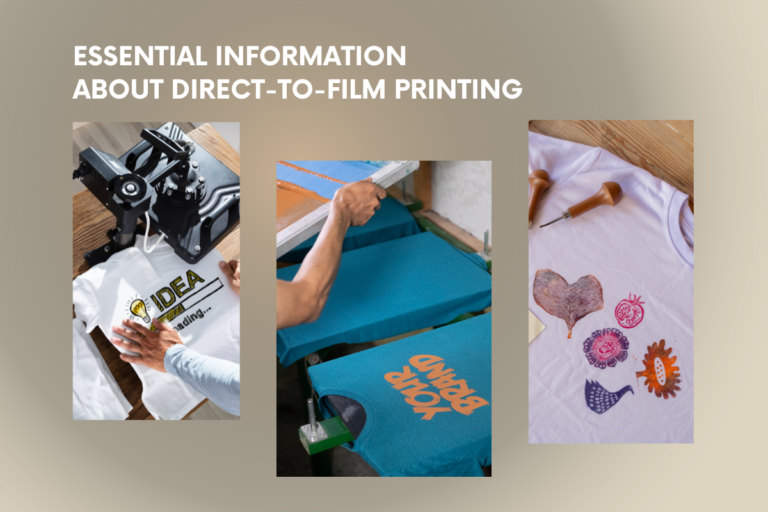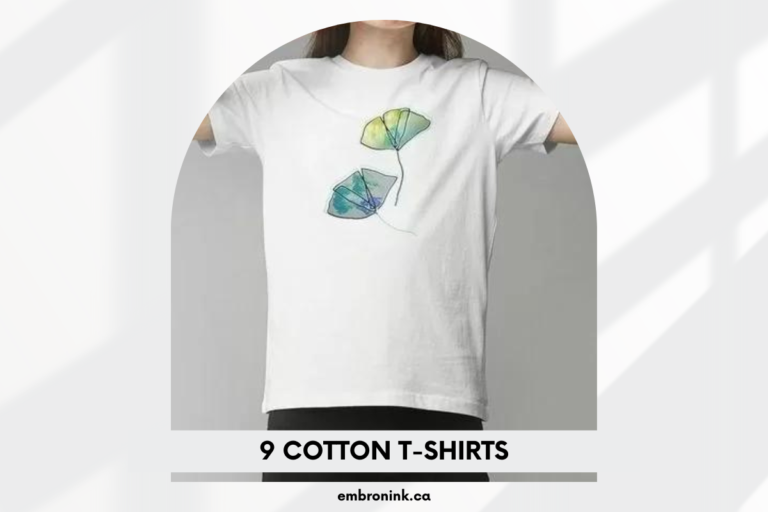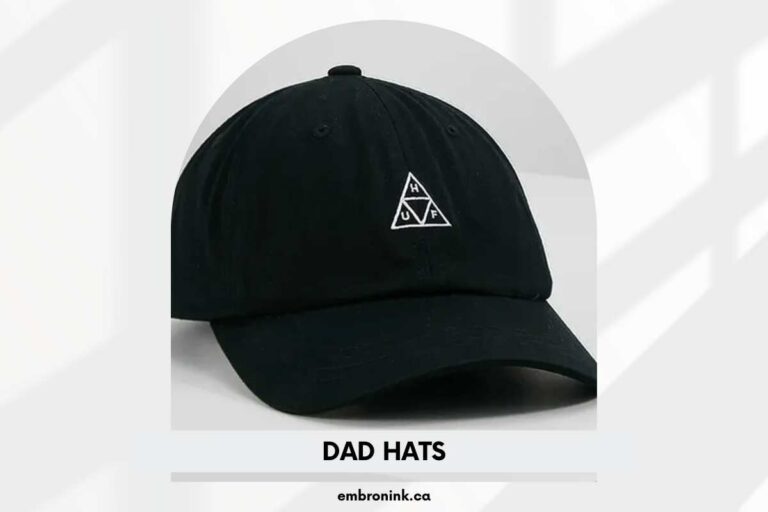Print on Demand – POD, what is it? What factors contribute to its rapid growth?
Surely, eye-catching printed shirts or unique water bottles with intriguing captions are nothing new to you. These are just a few of many products produced and printed on demand (POD). So what exactly is Print on Demand? How does it differ from dropshipping? Don’t miss out on EmbroInk‘s article below.
What is Print on Demand?
Print on Demand (POD) is a business model that allows for the production of customized products based on customer demand, without the need for pre-existing inventory. According to Kaitlin Cremmins, Marketing Director at Long Island Screen Printing, the POD industry shows no signs of slowing down. There is a continuous increase in demand for unique products and personalized options among consumers today. This service enables businesses of any scale to offer custom products at reasonable prices.
Over the past 4 years, the entire POD industry has grown by 12%. In a recent survey by Printful, approximately 45% of POD store owners reported a significant increase in their sales in 2020.
Increasingly, store owners are shifting towards POD, benefiting from unique, trendy custom products without the need for heavy investment in inventory or production time.

What is Print on Demand?
Print on Demand (POD) is an e-commerce business model where you collaborate with custom printing service providers or white-label product suppliers to personalize products according to your own designs, and then sell them under your own brand.
Popular POD Products Today
Currently, there are four main categories of products that are widely sold through POD, including fashion, accessories, household items, and tech accessories. Specifically:
- Fashion: T-shirts, dresses, leggings, skirts, shorts, hoodies, etc.
- Accessories: Tote bags, hats, face masks, socks, sneakers, backpacks, stickers, etc.
- Household items: Ceramic mugs, water bottles, pillowcases, towels, Tumbler cups, etc.
- Tech accessories: Phone cases, screen protectors, etc.
The hottest products during holidays, Tet, and special events include:
- Valentine’s Day (February 14th): Boxers & Underwear, candle holders, keychains, couple shirts, couple mugs, etc., featuring romantic and warm designs celebrating love.
- Mother’s Day (May 9th): Leggings, towels, aprons, etc., adorned with images and quotes celebrating motherhood.
Back to school (August, September): T-shirts, backpacks, drawstring bags, puzzles, etc., designed to energize the start of the new school year. - Christmas (December 24th) & New Year: Decorations, socks, Christmas stockings, banners, etc., featuring designs with stars, snowflakes, Santa Claus, stockings, Christmas trees, candy canes, golden bells, etc.
Pros and Cons of Print on Demand (POD)
Key Benefits of Print on Demand
- Rapid Introduction of New Designs: Once you have your own design, you can create and sell a product almost instantly.
- No Worries About Shipping: Your POD supplier takes care of shipping and order fulfillment. After selling, you’re only responsible for customer service.
- Low Investment, Lower Risk: Since you don’t maintain inventory, you don’t need to invest upfront in large quantities of products. Costs only arise when you have orders.
- Easy Brand Building: With unique products bearing your personal touch and exclusive designs, building your own brand becomes easier.
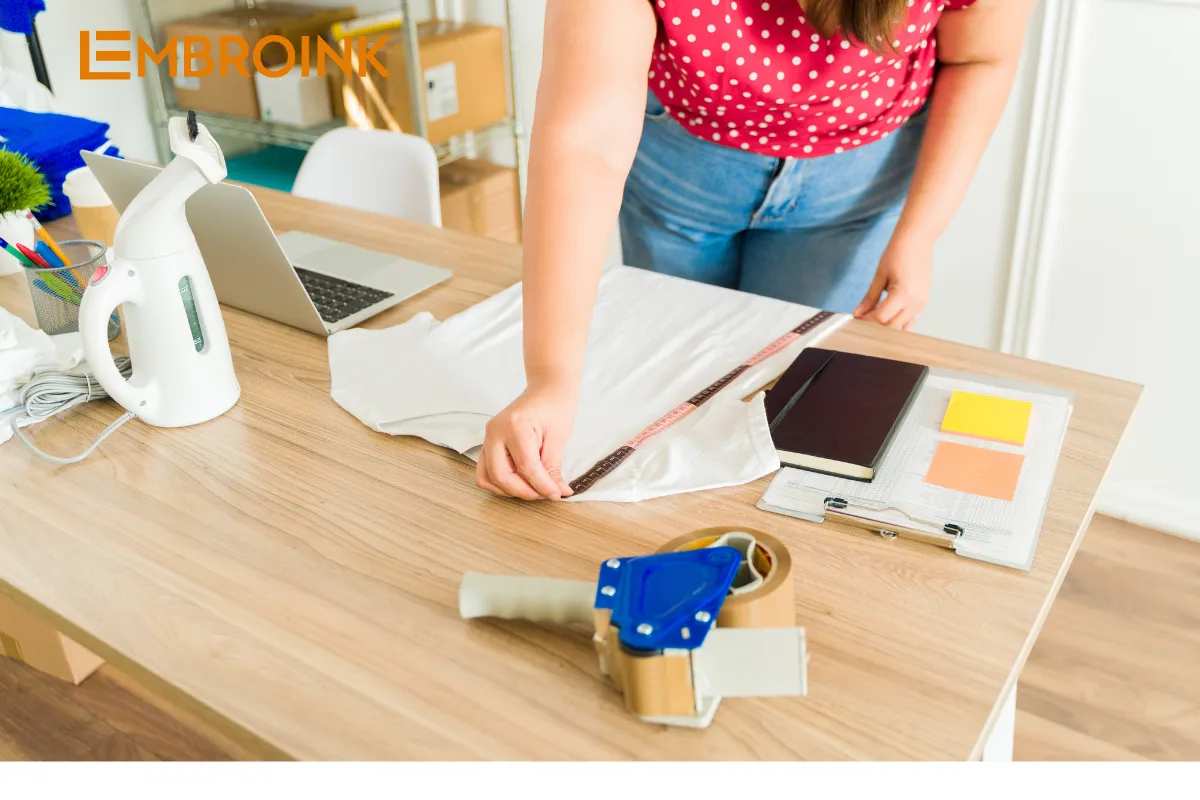
Considerations and Limitations
- Lower Profit Margins: It’s natural that you’ll incur higher costs per item for one or a few products compared to purchasing large quantities wholesale.
- Limited Control Over Shipping Management: Not being directly responsible for shipping makes it challenging to impress customers with this aspect of service and related customer experiences.
- Product Data Limitations: Your ability to customize products depends on your POD supplier’s capabilities. Introducing new products or materials requires careful consideration of your supplier’s execution capabilities.
- Longer Order Fulfillment Times: Because all products are printed on demand, fulfilling orders takes longer compared to having inventory ready. Clearly communicate this aspect with your customers.
Why is Print On Demand becoming a trend?
Print On Demand (POD) is becoming a trend due to several compelling reasons:
- Low Financial Risk: POD is an ideal choice for individuals and small businesses looking to start online businesses without facing significant financial risks. This model offers flexibility and high customization, allowing experimentation with different designs and products without the need to invest in inventory.
- Global Accessibility: POD facilitates global reach, enabling easy scalability of production and shortening the time from order placement to delivery. This enhances customer satisfaction, encourages repeat business, and promotes word-of-mouth referrals to friends and family.
Overall, POD combines low-risk entry into e-commerce with the ability to cater to diverse global markets, making it an attractive option for modern entrepreneurs and businesses alike.
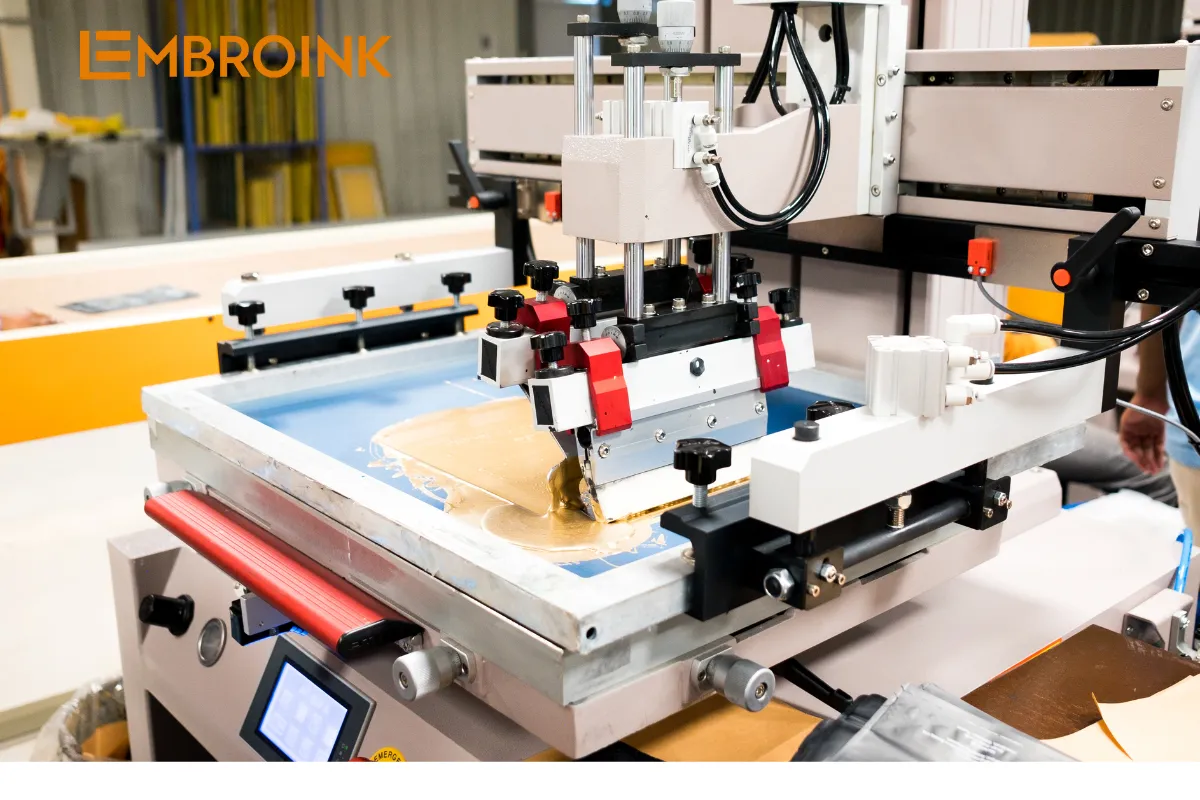
What’s the difference between fulfillment POD and e-commerce POD platforms?
Fulfillment POD services provide a complete system from order creation to delivery. You just need to connect your online store to the POD platform. When an order is placed, the system automatically sends the order details to the printing service and carries out all processes until the order is completed.
On the other hand, e-commerce POD platforms allow you to list and sell your products directly on their platform. You simply upload your design templates, and they take responsibility for selling those products on your behalf. You don’t need to operate your own online store or manage the sales process yourself.
How to Start a Successful POD Business
To effectively start a successful POD business, follow these steps:
Research and Choose a Niche Market
Success in Print on Demand (POD) business critically depends on choosing the correct market niche. It begins with conducting comprehensive market research to gain insights into prevailing trends, popular themes, and the specific preferences of your target demographic. By delving deep into market analysis, you can identify areas characterized by significant consumer demand yet minimal competition, offering a prime opportunity to carve out a distinctive presence.
This strategic approach not only facilitates easier differentiation but also enhances the potential for capturing a loyal customer base. In essence, the foundation of a successful POD venture lies in meticulously selecting a niche market that aligns with your unique selling proposition and resonates strongly with your intended audience.
Develop a Unique Selling Proposition (USP)
Having a unique selling point is paramount for success in the Print on Demand (POD) industry. It’s essential to pinpoint what distinguishes your POD products from others in the market. This could be centered around design uniqueness, ensuring your products feature original and compelling designs that resonate with your target audience.
Alternatively, you might focus on material quality, ensuring that your POD items are crafted using high-quality materials that enhance durability and appeal. Another approach could emphasize product excellence, ensuring every aspect of your POD offerings, from printing to packaging, reflects a commitment to superior quality and customer satisfaction. By clearly defining and effectively communicating your unique selling point, you can effectively differentiate your POD business and attract loyal customers who value what your products uniquely offer.
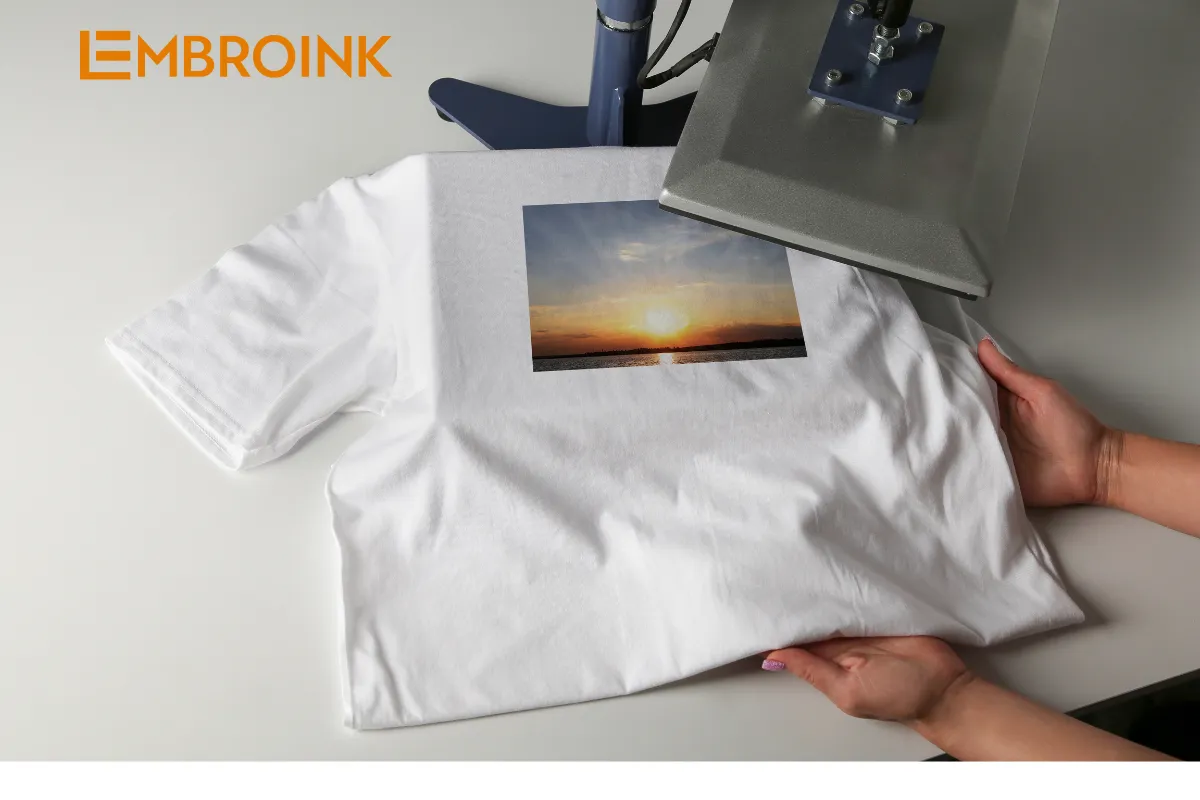
Create or Source Designs
In the Print on Demand (POD) business, your designs are at the core of your success. You have the flexibility to create designs that cater specifically to your chosen market niche. Whether you’re adept at designing yourself or choose to collaborate with talented designers, the goal is to find designs that deeply resonate with your customer base.
Creating bespoke designs allows you to tailor your products to meet the preferences and interests of your target audience. This customization not only sets your offerings apart but also enhances their appeal and relevance. By understanding the trends and preferences within your niche, you can craft designs that capture attention and inspire purchases.
Partner with a Reliable POD Company
Choosing a reputable Print on Demand (POD) provider is crucial to ensure the smooth operation and success of your business. There are several key factors to consider when selecting a POD provider:
- Print Quality: High-quality printing is essential to delivering products that meet customer expectations. Look for providers that offer reliable printing technology and methods that produce clear, durable, and vibrant prints.
- Product Variety: A diverse range of products allows you to offer a wider selection to your customers. Check if the POD provider offers a variety of items such as apparel (t-shirts, hoodies, leggings), accessories (bags, hats), home goods (mugs, pillows), and more.
- Production and Shipping Times: Efficient production and shipping processes are critical to meeting customer demands and expectations. Choose a provider that can fulfill orders promptly and has reasonable shipping times to ensure timely delivery to your customers.
- Pricing: Compare pricing structures among different POD providers to find competitive rates that fit your budget. Consider not only the base cost of products but also any additional fees such as setup fees or shipping costs that may impact your overall expenses.
- Customer Service: Reliable customer support is essential for resolving issues promptly and maintaining good relationships with your customers. Look for POD providers that offer responsive customer service, clear communication channels, and a reputation for addressing concerns effectively.
Marketing and Advertising
Effective marketing is crucial for the success of a Print on Demand (POD) business. To effectively promote your POD products, it’s essential to leverage a variety of strategic approaches. Social media marketing plays a pivotal role by allowing you to showcase your products on platforms like Facebook, Instagram, Twitter, and Pinterest. Engaging posts, targeted ads, and relevant hashtags can significantly enhance visibility and attract your target audience.
Content marketing complements social media efforts by creating valuable content such as blogs, videos, and tutorials that educate and inspire your audience. This helps build credibility and authority in your niche, driving organic traffic to your POD store. Collaborating with Key Opinion Leaders (KOLs) or influencers who resonate with your target market can amplify your reach through their trusted recommendations.
By following these steps diligently, you can launch and grow a successful POD business that meets the demands of your chosen market niche.

